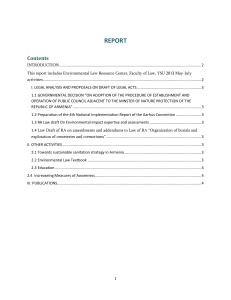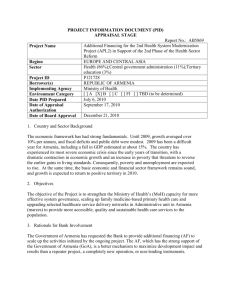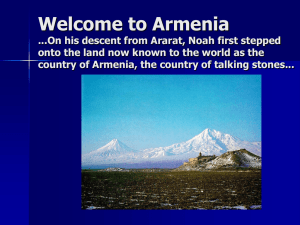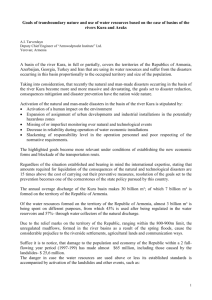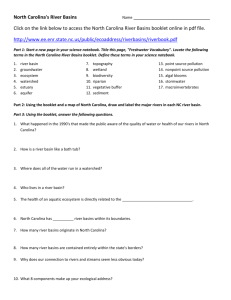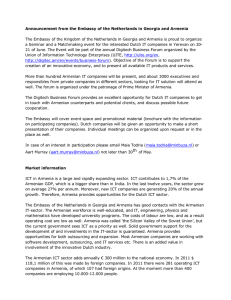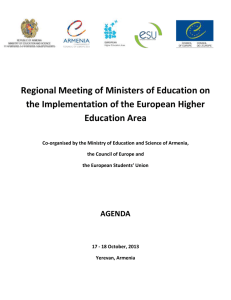Using GIS for assessing, monitoring and protecting the river
advertisement
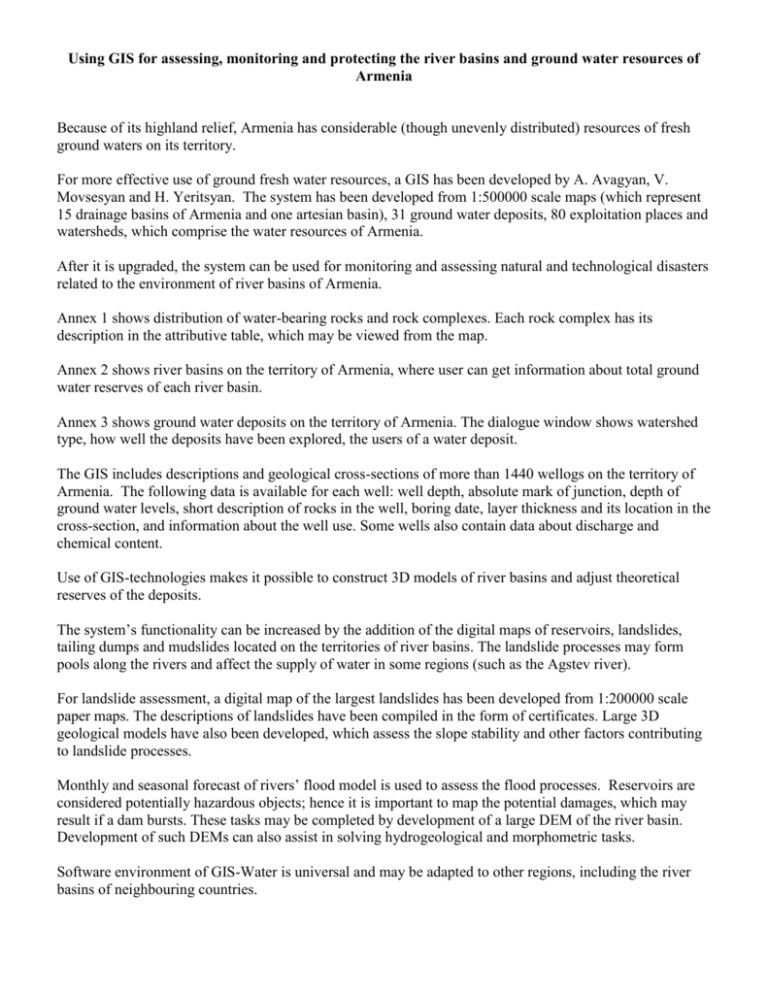
Using GIS for assessing, monitoring and protecting the river basins and ground water resources of Armenia Because of its highland relief, Armenia has considerable (though unevenly distributed) resources of fresh ground waters on its territory. For more effective use of ground fresh water resources, a GIS has been developed by A. Avagyan, V. Movsesyan and H. Yeritsyan. The system has been developed from 1:500000 scale maps (which represent 15 drainage basins of Armenia and one artesian basin), 31 ground water deposits, 80 exploitation places and watersheds, which comprise the water resources of Armenia. After it is upgraded, the system can be used for monitoring and assessing natural and technological disasters related to the environment of river basins of Armenia. Annex 1 shows distribution of water-bearing rocks and rock complexes. Each rock complex has its description in the attributive table, which may be viewed from the map. Annex 2 shows river basins on the territory of Armenia, where user can get information about total ground water reserves of each river basin. Annex 3 shows ground water deposits on the territory of Armenia. The dialogue window shows watershed type, how well the deposits have been explored, the users of a water deposit. The GIS includes descriptions and geological cross-sections of more than 1440 wellogs on the territory of Armenia. The following data is available for each well: well depth, absolute mark of junction, depth of ground water levels, short description of rocks in the well, boring date, layer thickness and its location in the cross-section, and information about the well use. Some wells also contain data about discharge and chemical content. Use of GIS-technologies makes it possible to construct 3D models of river basins and adjust theoretical reserves of the deposits. The system’s functionality can be increased by the addition of the digital maps of reservoirs, landslides, tailing dumps and mudslides located on the territories of river basins. The landslide processes may form pools along the rivers and affect the supply of water in some regions (such as the Agstev river). For landslide assessment, a digital map of the largest landslides has been developed from 1:200000 scale paper maps. The descriptions of landslides have been compiled in the form of certificates. Large 3D geological models have also been developed, which assess the slope stability and other factors contributing to landslide processes. Monthly and seasonal forecast of rivers’ flood model is used to assess the flood processes. Reservoirs are considered potentially hazardous objects; hence it is important to map the potential damages, which may result if a dam bursts. These tasks may be completed by development of a large DEM of the river basin. Development of such DEMs can also assist in solving hydrogeological and morphometric tasks. Software environment of GIS-Water is universal and may be adapted to other regions, including the river basins of neighbouring countries. ANNEX 1 ANNEX 2 ANNEX 3
